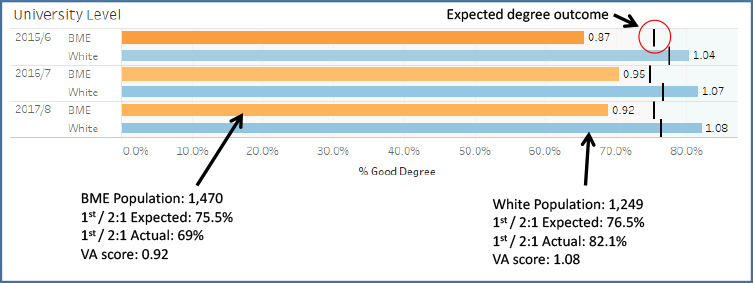Using the Value Added score to influence change
While the BME attainment gap may be well known within the HE sector, the use of metrics is crucial in helping define the size of the gap and in assessing the success of interventions to address the gap.
Kingston University has developed a value added metric which
has proved to be a powerful way of measuring attainment gaps right down to
course level. One of the two principal aims of this project was to determine
the transferability of the VA methodology to other institutions.
Disseminating the VA approach
One of the principal aims of this Catalyst project was to determine how far it was possible for other HEIs to create value added dashboards and then use these to generate responses to the BME attainment gap. Training was therefore given to all partners both in creating the dashboards and disseminating the findings.
Creating the VA – partner experiences
So how long will it take to create the value added score? How complicated is it? Following a day’s training by the team at Kingston University (and associated materials), all the partners managed to successfully create their own dashboard mirroring the Kingston format. There was considerable variation in the ease with which this was achieved with the majority of partners finding it straightforward (with some difficulties), while others found it quite complex, but all found it achievable. This variation was reflected in the time taken to develop the dashboards, which ranged from 1 day to 30 days (with the majority taking between 5-15 days). One partner utilised the skills of a student to complete the dashboard which proved to be a valuable learning experience for the student involved. Partners reported that when familiarity with the Access programme was an issue, excel was used as a substitute but this was found in both cases to complicate the exercise.
However all were of the view that having created the dashboards they had a valuable tool which would be very easy to update with annual data, requiring no more than a day or half a day.
It was suggested an online forum would have helped those creating the VA to share experiences, challenges and solutions to problems such as how to deal with integrated enhanced masters courses or joint degrees unevenly split between subjects.



